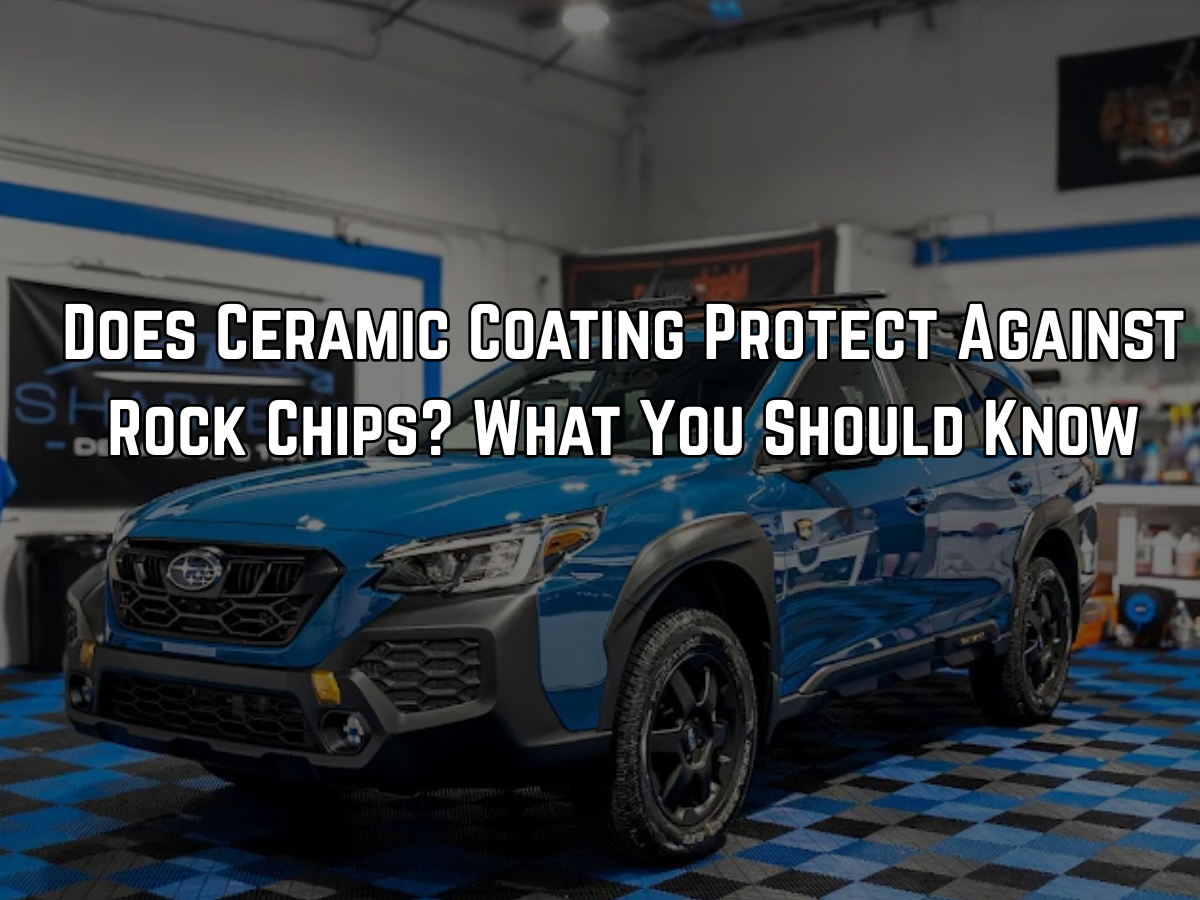Paint Protection Film vs Ceramic Coating
If you're serious about keeping your car’s paint looking flawless for years, you've likely heard of Paint Protection Film (PPF) and Ceramic Coating.
But here's the problem: most people don’t understand how different they really are, or which one is better for their needs.
This article clears up the confusion, giving you a clear, side-by-side comparison so you can make a smart, informed decision.
Key Takeaways
- PPF protects against physical damage like rock chips and scratches.
- Ceramic Coating protects against chemical damage like UV rays, water spots, and bird droppings.
- PPF is thicker and more impact-resistant.
- Ceramic Coating is thinner but adds gloss, ease of cleaning, and hydrophobic effects.
- You can combine both for the best of both worlds.
What Is Paint Protection Film (PPF)?
PPF is a clear polyurethane film that’s applied directly to your car’s painted surfaces. It’s typically 6–10 mils thick (1 mil = 0.001 inches) and designed to absorb small impacts.
Key Features:
- Self-healing: Minor scratches disappear with heat or sunlight.
- Stain-resistant: Doesn’t absorb bird droppings or water spots.
- Impact protection: Shields against gravel, bugs, salt, and road debris.
- Matte or gloss finishes available.
Common Applications:
- Bumpers
- Hoods
- Side mirrors
- Fenders
- Door edges and handles
What Is Ceramic Coating?
Ceramic Coating is a liquid polymer that chemically bonds to your vehicle’s clear coat. Once cured, it forms a thin, semi-permanent protective layer.
Key Features:
- Hydrophobic: Water, dirt, and grime slide off easily.
- UV Protection: Shields paint from fading and oxidation.
- Gloss Enhancement: Makes paint look deeper and richer.
- Chemical resistance: Defends against acidic contaminants like bird droppings, bug splatter, and tree sap.
Note: Ceramic coatings are not scratch-proof. They reduce micro-swirls but don’t stop rocks or road debris.
PPF vs Ceramic Coating: Feature Comparison
Here’s a side-by-side table to help you compare:
| Feature | Paint Protection Film (PPF) | Ceramic Coating |
|---|---|---|
| Thickness | 6–10 mil | ~0.03–0.05 mil |
| Scratch Protection | ★★★★★ (Excellent) | ★★☆☆☆ (Low) |
| Chemical Resistance | ★★★★☆ | ★★★★★ |
| UV Protection | ★★★★☆ | ★★★★★ |
| Gloss/Depth Enhancement | ★★★☆☆ | ★★★★★ |
| Hydrophobic Effect | ★★★☆☆ | ★★★★★ |
| Self-Healing | Yes (for light scratches) | No |
| Lifespan | 5–10 years (depends on quality) | 2–5 years (pro-grade coatings) |
| Maintenance | Easy, but requires care | Very easy |
| Cost (full vehicle) | $1,500–$6,000+ | $700–$2,000+ |
Pros and Cons Breakdown
Paint Protection Film
Pros:
- Excellent rock chip and scratch defense
- Self-healing from small abrasions
- Ideal for high-impact areas (hood, bumper)
Cons:
- More expensive than ceramic
- Can yellow or peel if not maintained properly
- Slight visible edge on panels
Ceramic Coating
Pros:
- Long-lasting gloss and shine
- Extremely low maintenance
- Easy to wash, dries faster
- Affordable compared to PPF
Cons:
- No impact protection
- Doesn’t heal scratches
- Needs proper prep and curing for best results
When to Choose PPF
Go with PPF if:
- You do a lot of highway driving
- You want to prevent rock chips or scratches
- You drive a luxury, exotic, or high-value vehicle
- You live in an area with lots of gravel or construction zones
When to Choose Ceramic Coating
Go with ceramic coating if:
- You want a glossy, easy-to-clean finish
- You need protection from UV rays, dirt, and chemicals
- Your car is already in good condition and you want to keep it that way
- You prefer a low-maintenance routine
Can You Use Both Together?
Yes, and it’s actually the ideal combo.
Apply PPF to high-impact areas (like front bumpers, hoods, and fenders), then apply ceramic coating on top of the PPF and the rest of the vehicle.
This setup gives you:
- Impact protection + Gloss + Hydrophobic surface
- Easier cleaning + Long-term paint health
Most professional detailers recommend this combo for full protection and aesthetic value.
Final Thoughts
Both Paint Protection Film and Ceramic Coating serve different purposes.
- PPF is like armor, designed to take hits and stop damage before it starts.
- Ceramic coating is like wax on steroids, making your car look better and stay cleaner with minimal effort.
Choose based on your driving habits, environment, budget, and long-term goals. Or better yet, combine both for maximum protection.




